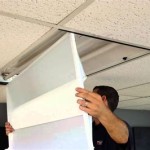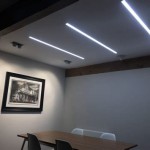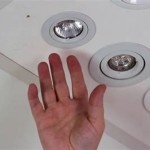Essential Aspects of False Ceiling Design For Office Cabin
False ceilings, also known as suspended ceilings, are becoming increasingly popular in office cabins for their ability to enhance aesthetics, improve acoustics, and conceal building services. Designing a false ceiling for an office cabin requires careful consideration of several essential aspects to achieve a functional and visually appealing space.
1. Ceiling Height and Proportions
The height of the false ceiling should complement the overall dimensions of the cabin. A too-low ceiling can create a sense of confinement, while a too-high ceiling can make the space feel impersonal. The ideal height should allow for ample headroom while maintaining a balanced and proportionate appearance.
2. Grid System and Panel Selection
The grid system is the framework that supports the ceiling panels. It typically consists of parallel T-bars suspended from the main ceiling. The choice of grid system depends on the desired ceiling height and the weight of the ceiling panels. The ceiling panels can be made from various materials, such as gypsum, mineral fiber, or metal, each offering specific acoustic and aesthetic properties.
3. Acoustic Considerations
Acoustics play a crucial role in the comfort and productivity of an office environment. False ceilings can effectively reduce noise levels and improve speech intelligibility by incorporating acoustic panels. These panels are designed with sound-absorbing materials that mitigate reverberation and background noise, creating a more conducive workspace.
4. Lighting Integration
Lighting plays a vital role in setting the ambiance and enhancing the functionality of the office cabin. False ceilings offer the flexibility to integrate various lighting fixtures, such as recessed lighting, suspended fixtures, or diffused panels. The lighting design should consider the specific lighting requirements of the tasks performed in the cabin and create a comfortable visual environment.
5. Ventilation and Airflow
False ceilings can also accommodate ventilation systems, ensuring proper air circulation and temperature control. Vents or diffusers can be integrated into the ceiling panels, allowing for efficient air distribution throughout the cabin. Adequate ventilation helps maintain a healthy indoor air quality and prevents discomfort for occupants.
6. Accessibility and Maintenance
Regular maintenance is crucial to ensure the longevity and optimal performance of the false ceiling. The ceiling panels should be easily removable or accessible for inspection, repairs, or wiring changes. A well-planned design incorporates hatches or panels that allow for convenient access to utility lines and building services concealed above the ceiling.
7. Aesthetics and Customization
False ceilings offer a wide range of aesthetic possibilities to complement the design of the office cabin. The panels can be painted, textured, or customized with patterns and graphics to create a unique and visually appealing ambiance. False ceilings also allow for integration of decorative elements, such as molding or ceiling tiles, to enhance the architectural character of the space.
By considering these essential aspects, you can design a false ceiling for your office cabin that meets both functional and aesthetic requirements. A well-executed false ceiling can significantly enhance the comfort, productivity, and overall visual appeal of your workspace.

Office False Ceiling Design Excel Furniture

False Ceiling Design For Office Best Interior Architectural Plan Hire A Make My House Expert

10 Inspiring False Ceiling Designs To Elevate Your Office Spaces Nerolac

33 False Ceiling Designs For Office Better Ivity Building And Interiors

Office False Ceiling Design Ideas How To Select The Best For

20 Office Pop Design Ideas For A Welcoming Ambience

Office Cabin Interior Designing Service

Jj Designers

10 Inspiring False Ceiling Designs To Elevate Your Office Spaces Nerolac

Office Ceiling Design Pop False Ceilings For Workspaces
Related Posts








